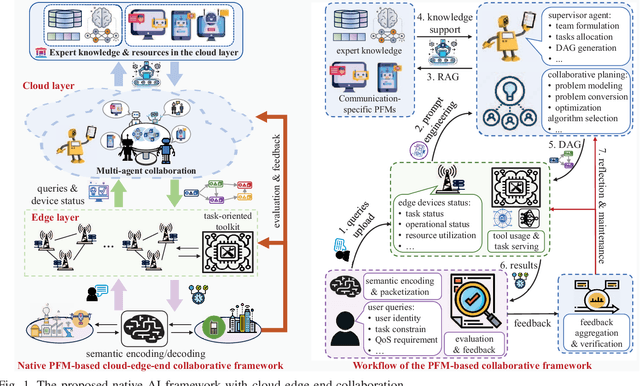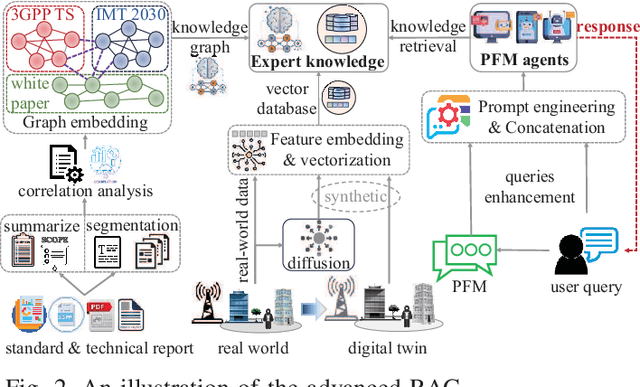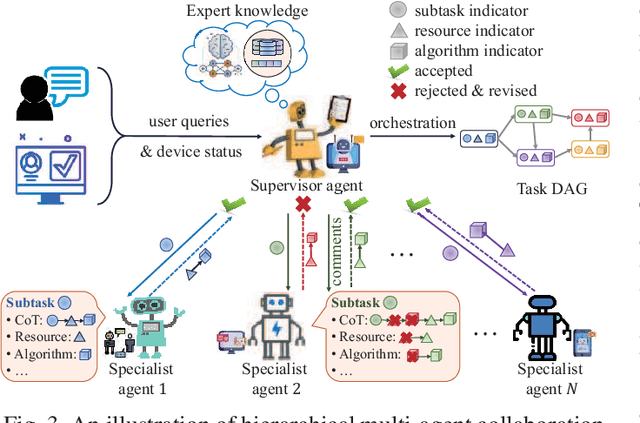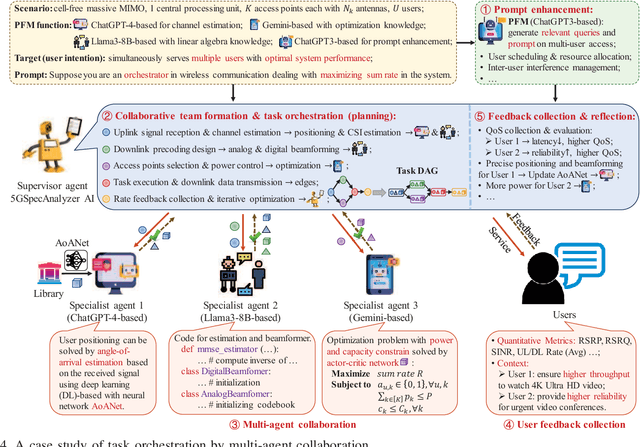Zhiheng Guo
Foundation Model Based Native AI Framework in 6G with Cloud-Edge-End Collaboration
Oct 26, 2023



Abstract:Future wireless communication networks are in a position to move beyond data-centric, device-oriented connectivity and offer intelligent, immersive experiences based on task-oriented connections, especially in the context of the thriving development of pre-trained foundation models (PFM) and the evolving vision of 6G native artificial intelligence (AI). Therefore, redefining modes of collaboration between devices and servers and constructing native intelligence libraries become critically important in 6G. In this paper, we analyze the challenges of achieving 6G native AI from the perspectives of data, intelligence, and networks. Then, we propose a 6G native AI framework based on foundation models, provide a customization approach for intent-aware PFM, present a construction of a task-oriented AI toolkit, and outline a novel cloud-edge-end collaboration paradigm. As a practical use case, we apply this framework for orchestration, achieving the maximum sum rate within a wireless communication system, and presenting preliminary evaluation results. Finally, we outline research directions for achieving native AI in 6G.
Unsupervised Massive MIMO Channel Estimation with Dual-Path Knowledge-Aware Auto-Encoders
May 30, 2023



Abstract:In this paper, an unsupervised deep learning framework based on dual-path model-driven variational auto-encoders (VAE) is proposed for angle-of-arrivals (AoAs) and channel estimation in massive MIMO systems. Specifically designed for channel estimation, the proposed VAE differs from the original VAE in two aspects. First, the encoder is a dual-path neural network, where one path uses the received signal to estimate the path gains and path angles, and another uses the correlation matrix of the received signal to estimate AoAs. Second, the decoder has fixed weights that implement the signal propagation model, instead of learnable parameters. This knowledge-aware decoder forces the encoder to output meaningful physical parameters of interests (i.e., path gains, path angles, and AoAs), which cannot be achieved by original VAE. Rigorous analysis is carried out to characterize the multiple global optima and local optima of the estimation problem, which motivates the design of the dual-path encoder. By alternating between the estimation of path gains, path angles and the estimation of AoAs, the encoder is proved to converge. To further improve the convergence performance, a low-complexity procedure is proposed to find good initial points. Numerical results validate theoretical analysis and demonstrate the performance improvements of our proposed framework.
 Add to Chrome
Add to Chrome Add to Firefox
Add to Firefox Add to Edge
Add to Edge